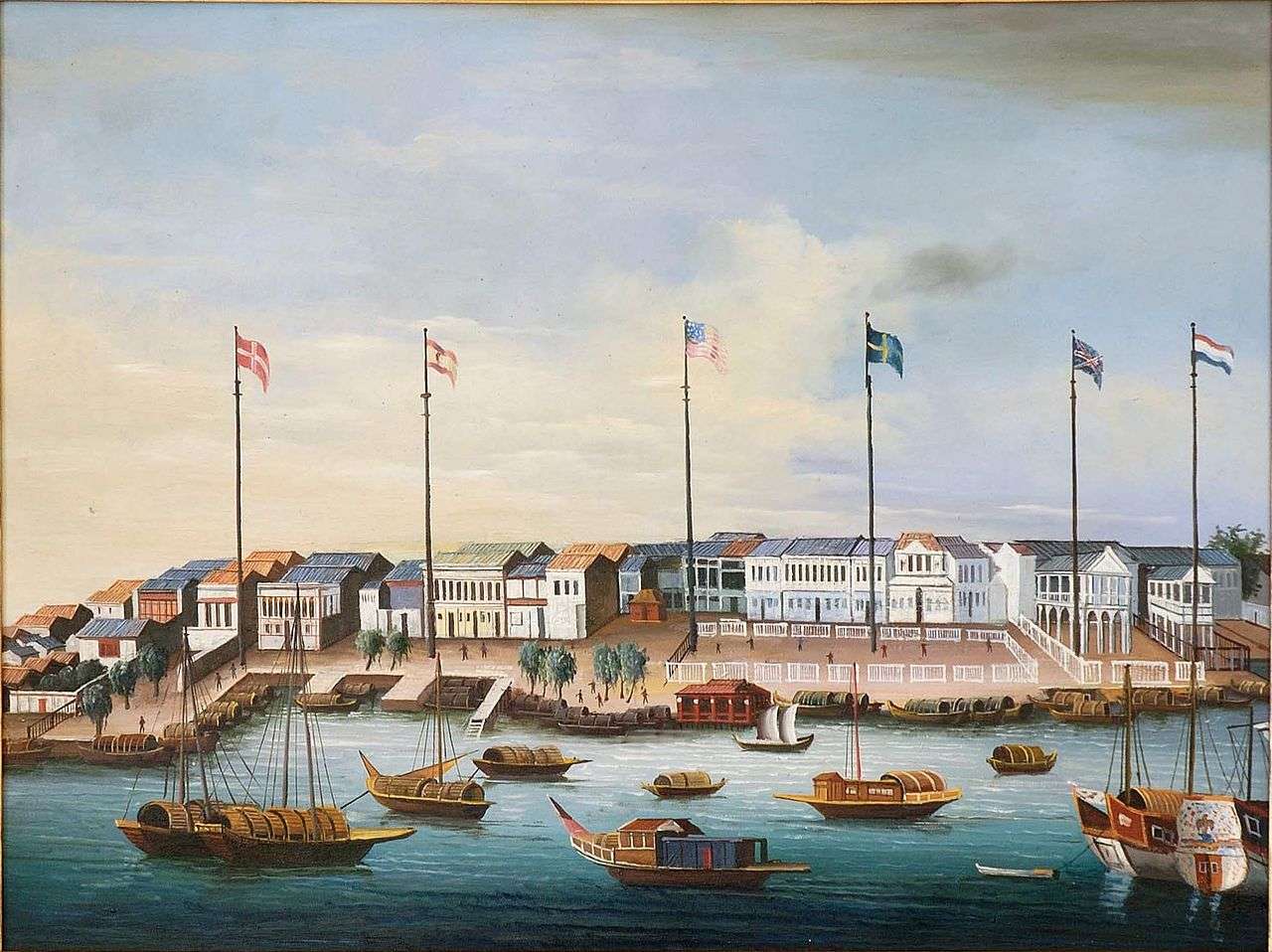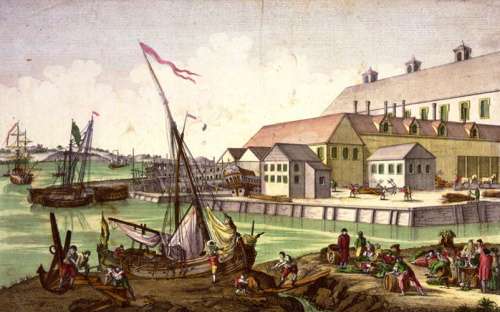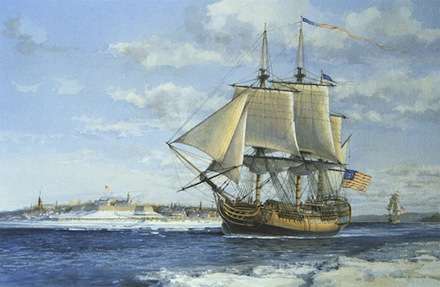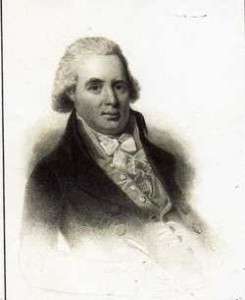The Empress of China launched the China trade on Feb. 22, 1784, when she sailed out of New York Harbor loaded with ginseng, lead, Spanish silver coins and woolen cloth. The Treaty of Paris had been signed, America and Britain were at peace and America was free for the first time to trade with China.
American merchants had long eyed China as a tantalizing opportunity ever since peace broke out. Not only were Americans enamored of Chinese tea, silks and home goods, but traders didn’t have too many other options. The British had cut off American trade with the West Indies, and European nations had set up daunting trade barriers.
Within 20 years of the Empress of China’s voyage, American ships would outnumber those of all other nations trading with China. Profit from the China trade would finance mills, factories, railroads and mines as well as courthouses, schools, roads and bridges. Philanthropic merchants would pour their wealth from China into such institutions as the Perkins School for the Blind, Massachusetts General Hospital, the Bunker Hill Monument and the Boston Athenaeum.
The China Trade Begins
The Empress of China, built as a privateer during the American Revolution, got a quick retrofit after the peace treaty was signed on Sept. 3, 1783.
Extremely cold weather froze the Empress of China in New York Harbor and delayed her first voyage. Finally, the weather broke and she sailed off to the East.
John Green, an Irishman from Philadelphia, was the Empress of China’s captain. Samuel Shaw, a 29-year-old Bostonian who had served as Gen. Henry Knox’s aide-de-camp, served as his senior business agent, or supercargo.
On Aug. 23, 1784, the ship sailed up the Pearl River in South China. The sailors aboard the ship thrilled to see the Stars and Stripes unfurled for the first time in that part of the world.

Chinese painting of the factories at Canton, 1820.
The French, the Danes, the Dutch and the British all greeted them politely. But the Chinese restricted them to a section of Canton where goods were exchanged in large factories, or hongs, while their ships moored nearby. Shaw reported on exchanges between British and American mariners:
On board the ships it was impossible to avoid speaking of the late war. They allowed it to have been a great mistake on the part of their nation – were happy it was over, –glad to see us in this part of the world, — hoped all prejudice would be laid aside, — and added, that, let America and England be united, they might bid defiance to all the world.
The ‘New People’
The Chinese didn’t know what to make of the Americans. They called them the ‘New People.’ (Later they would call them the ‘Flowery-Flag Devils’ because the stars on the flag looked to the Chinese like flowers.) Shaw showed them a map of the United States and explained the size and possibilities of the new country. The Chinese, he wrote, ‘were not a little pleased at the prospect of so considerable a market for the productions of their own empire.’
The Chinese had less interest in buying foreign goods than in selling their own. They did, however, prize ginseng, used as a curative, energy booster and aphrodisiac. Ginseng grew in only a few places: eastern Asia and parts of North America, including Canada, the mountains of New England, New York and Appalachia.
It took three months to scour the eastern United States for nearly 30 tons of ginseng to ship aboard the Empress of China. It was the largest shipment ever to arrive in Canton. Unfortunately for the Americans, the Europeans had also brought large amounts of the root. The price plummeted.
The China Trade Takes Off
Otherwise, trading went well. The Chinese made an empty building available for the Americans. Shaw negotiated the purchase and sale of goods with the Chinese hong merchants.
The Empress of China left Canton on Dec. 28, 1784 and arrived in New York Harbor on May 11, 1785. 22 months after her departure. She carried 800 chests of tea, 20,000 pairs of nankeen trousers and a huge quantity of porcelain. Newspapers announced her return, and stores up and down the East Coast sold her cargo. That’s where the Americans learned how to make real money in the China trade: the sale of Chinese export goods to Americans.
All told, the voyage earned a 25 percent return on investment. Investors had hoped for more, but they made enough to spawn a new era of commerce with China.
Shaw gave a complete report of the voyage to John Jay, the U.S. foreign minister. Jay shared his findings with Congress. Members of Congress responded with ‘a peculiar satisfaction in the successful issue of this first effort of the citizens of America to establish a direct trade with China.’
Wealth
For the next 60 years, the China trade would make New England merchants very, very wealthy. In Boston alone the China trade enriched George Cabot, John Perkins Cushing, Thomas Handasyd Perkins, Robert Bennet Forbes, Israel Thorndike and Russell Sturgis. Gideon Nye from North Fairhaven, Mass., made his fortune in the China trade. And in Salem, Mass., trade with China made rich men of Elias Hasket Derby, Abiel Abbot Low and Joseph Peabody.

Salem waterfront ca 1770-1780
You can still see the wealth generated by the China trade in Salem’s Chestnut Street District, part of the Samuel McIntire Historic District, the Salem Maritime National Historic Site and the Peabody-Essex Museum.
With thanks to When America First Met China by Eric Jay Dolin. This story about the China trade was updated in 2023.



15 comments
[…] The plan for the ship was for it to put in to Boston Harbor where it would be sumptuously outfitted for a wealthy contingent of tourists to travel to the London World Fair. After that she was to join the China Trade. […]
[…] Mott. Coffin and his partners told the Hall brothers they would kill seals in the Pacific Ocean, sell their skins in Canton, then return to […]
[…] have plenty of choices, including Appletons, Bacons, Cabots, Codmans, Coolidges, Crowninshields, Forbes, Hunnewells, Lodges, Lowells, Parkmans, Perkins, Russells, Saltonstalls, Shattucks, Shaws and […]
[…] according to The New England Historical Society, when they returned to New York Harbor on May 11, 1785, the Empress brought with her 800 chests of […]
[…] according to The New England Historical Society, when they returned to New York Harbor on May 11, 1785, the Empress brought with her 800 chests of […]
[…] Lyman went to Boston to seek a bigger fortune in 1786, just as the American Revolution had ended and the China Trade began. He married Lydia Williams of Salem, Mass., in 1786 and had five more […]
[…] to be joined. Frederick Law Olmsted was an unmoored young man, having dropped out of Yale College, gone to sea and hated it, wandered on foot around England with his brother John and started to write a […]
[…] This convoluted mechanism for selling opium left plenty of room for profit, a fact not lost on New England merchants who were developing their own China trade. […]
[…] Elizabeth Derby West was the eldest of the seven children of Elias Hasket Derby, one of the wealthiest Salem merchants and owner of the first vessel to trade directly with China. […]
[…] Bridges was the daughter of a Salem sea captain who plied the China trade. Like another Salem artist, Frank Benson, she loved the […]
[…] insurance the most prominent product. Ship owners sending their vessels abroad would insure them. The China Trade minted millionaires, and insurance provided, for a small fee, a hedge against […]
[…] porcelain. Newspapers announced her return, and stores up and down the East Coast sold her cargo. The return to her investors was 25%, less than had been hoped but enough to encourage others to invest in further trading with […]
[…] Hays was a Portuguese Sephardi and a patriot. He had left Newport before the British occupied it during the Revolution. He prospered in the shipping business as Boston grew with the China and other maritime trades. […]
[…] fare,’ a term not used after 1914. Salem, notes the author, played an important role in the old China trade, which began in […]
[…] to Canajoharie, a Mohawk village on the Mohawk River in New York. Margaret gathered and sold the ginseng that grew there, for export to Europe and […]
Comments are closed.